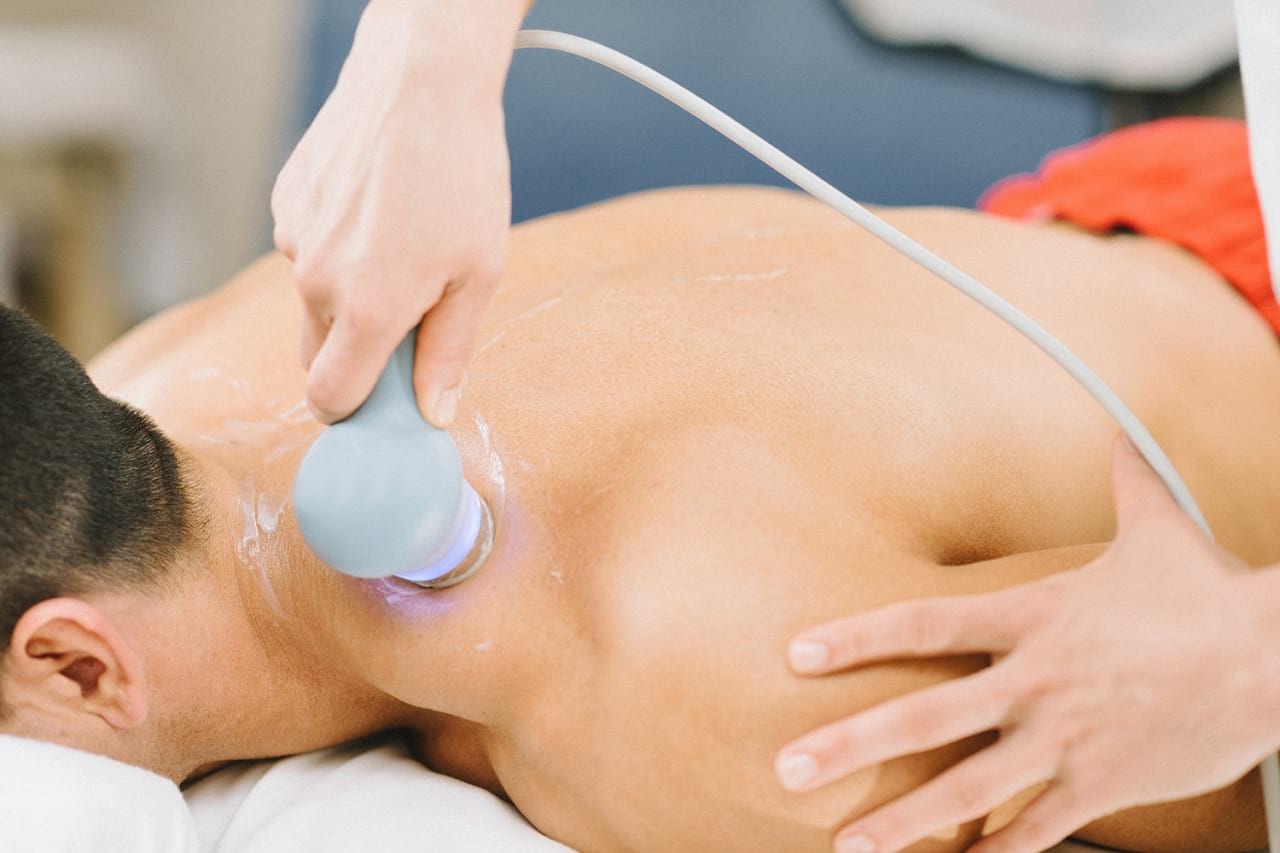Ultrasound therapy is a treatment with the help of a modern apparatus that radiates ultrasonic waves of different frequencies. They cause contraction and stretching of tissues, thereby stimulating regenerative processes. The lower limit of frequency is used to treat deeply located tissues, and the upper limit of frequency is used for inflamed tissues that are closer to the skin surface. By adjusting the frequency, the specialist concentrates the effect of ultrasound on problem areas, avoiding interaction with healthy organs and tissues.
Ultrasound affects the body of three types: physico-chemical, mechanical and thermal. The most important is the mechanical factor - due to the acoustic pressure, tissue microvibrations are created, and the areas that cannot be reached manually are massaged. The thermal effect of UST has a beneficial effect on blood vessels, and physicochemical processes activate redox processes and the synthesis of bioactive compounds.
HOW DOES ULTRASOUND TREATMENT TAKE PLACE?
The Institute of Vertebrology and Rehabilitation uses ultrasound to treat diseases of the joints and connective tissues (including with radiculitis), as well as for rehabilitation after injuries and fractures.
Ultrasound therapy is absolutely painless. Sometimes the procedure can be felt as weak heat at the point of impact. The treatment course most often includes 5-6 procedures. Our ultrasound therapy device is a worthy representative of the high-quality modern physiotherapy equipment line of BTL. One treatment procedure lasts about 7 minutes. It uses a comfortable and effective ultrasound frequency for the patient.
WHAT ARE USEFUL PROPERTIES OF ULTRASONIC THERAPY?
Along with other physiotherapeutic procedures, ultrasound treatment:
- enhances metabolic processes in tissues;
- increases the production of collagen and elastin;
- saturates cells with oxygen;
- normalizes blood circulation;
- relieves pain and cramps.
THERE ARE CONTRAINDICATIONS FOR UST?
Before prescribing a course of ultrasound therapy to a patient, the doctor necessarily studies the history and makes sure that there are no contraindications for this procedure.
Such contraindications may be:
- pregnancy;
- atherosclerosis;
- diseases of the central nervous system;
- heart failure;
- the presence of benign or malignant tumors;
- diseases of the endocrine and circulatory systems;
- the presence of metal prostheses.
Using an ultrasound machine for treating joints and solving other problems of the musculoskeletal system, specialists from the Institute of Vertebrology and Rehabilitation are primarily interested in removing the cause of the disease. As a rule, monotherapy does not solve the problem completely. Therefore, the doctor may recommend to the patient to combine the course of UST with other physiotherapeutic procedures, therapeutic massages or exercises on David medical simulators.

